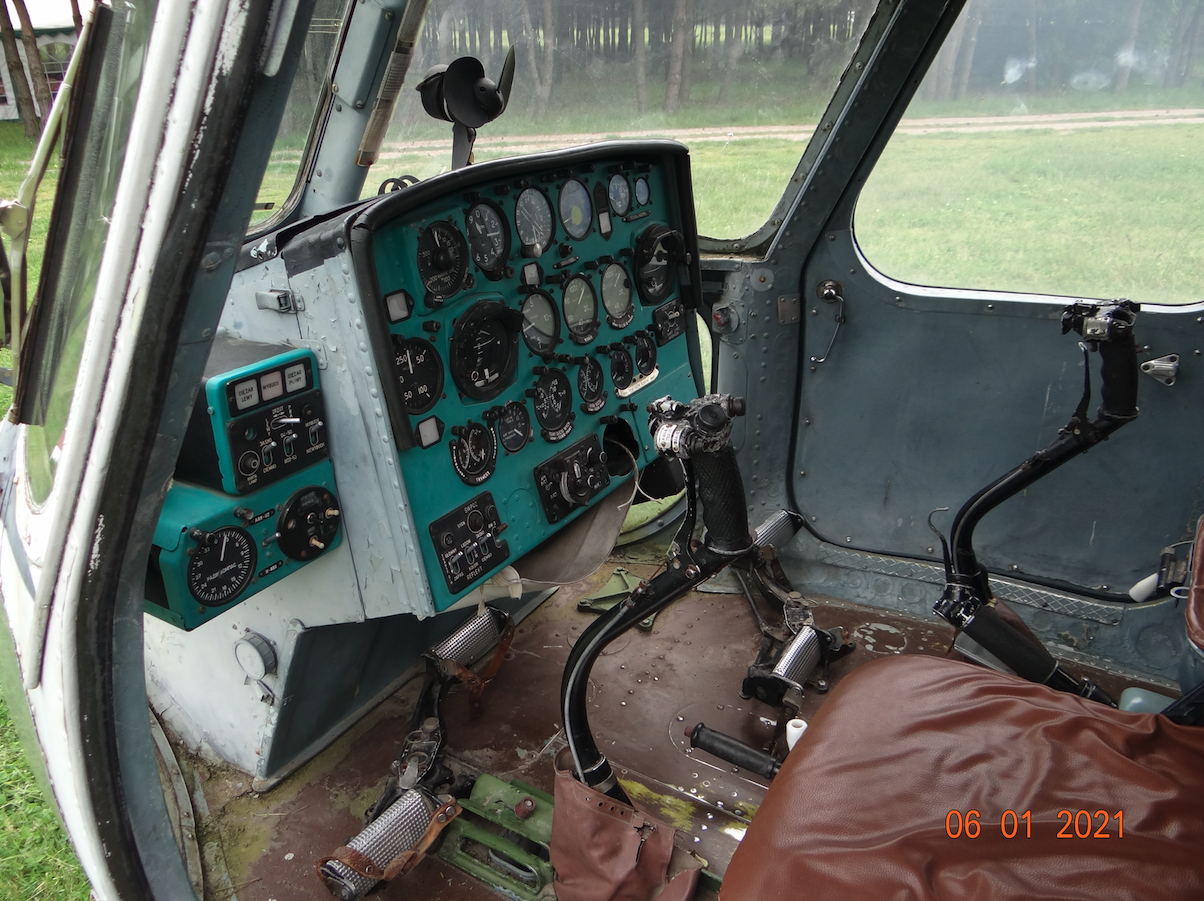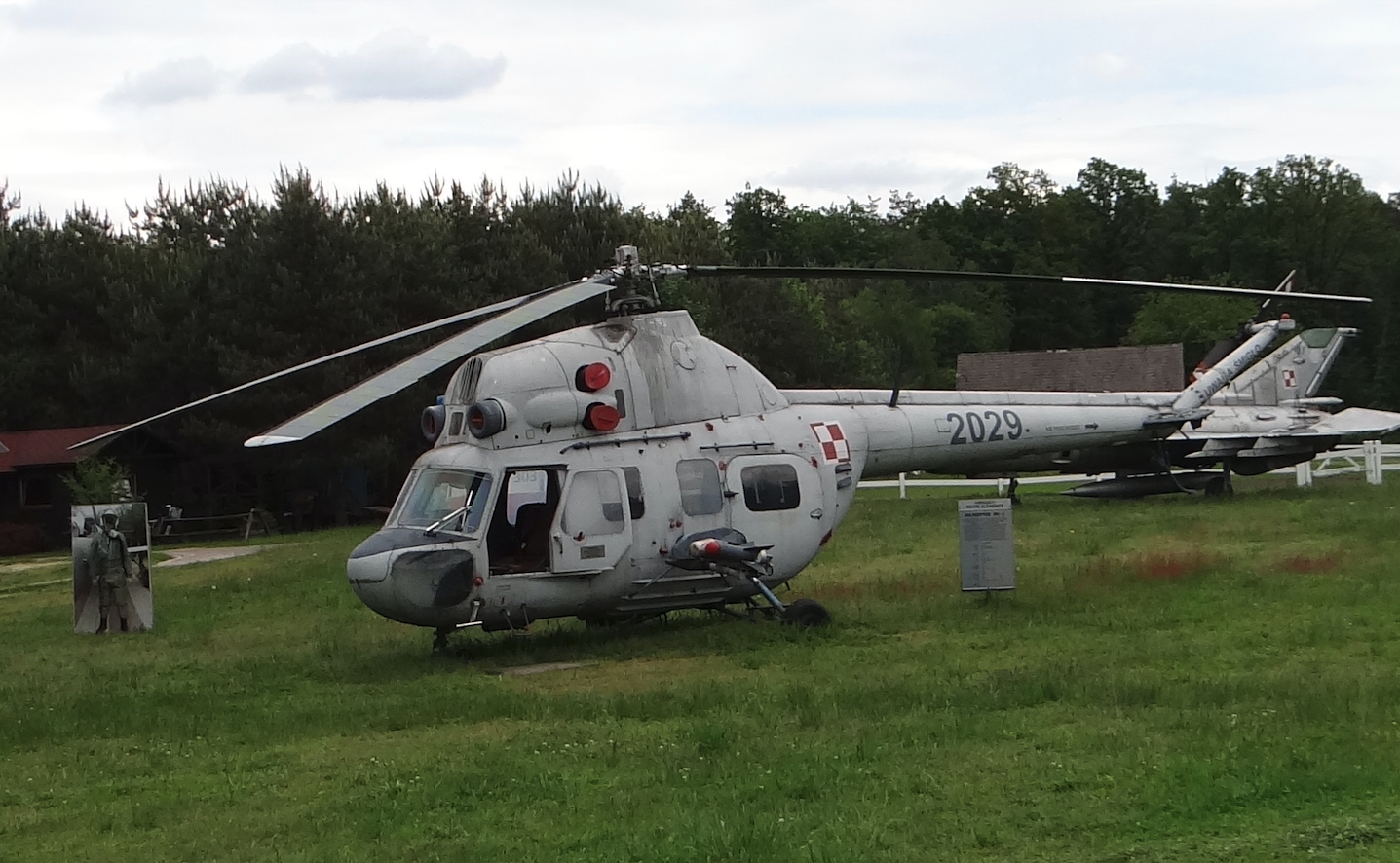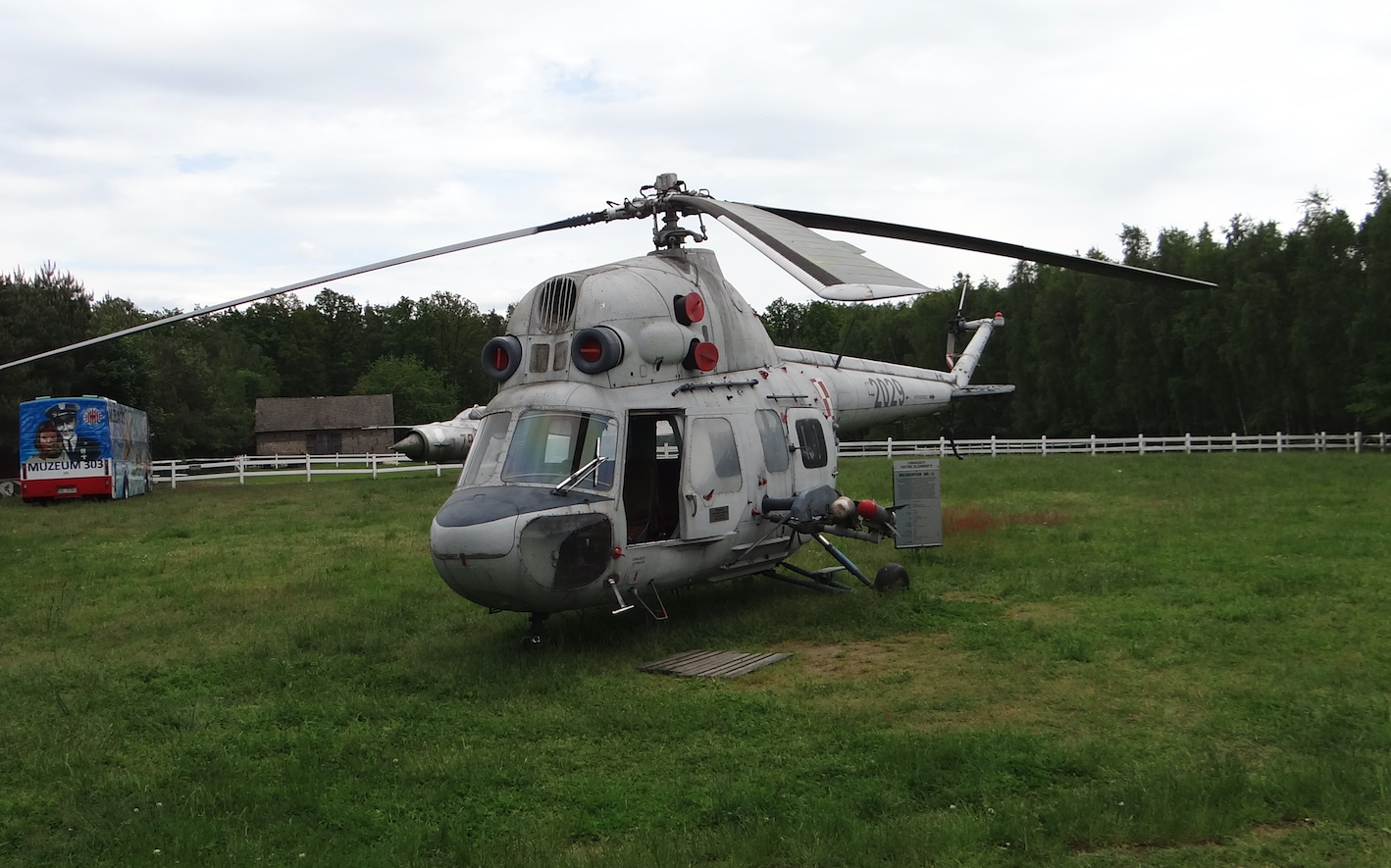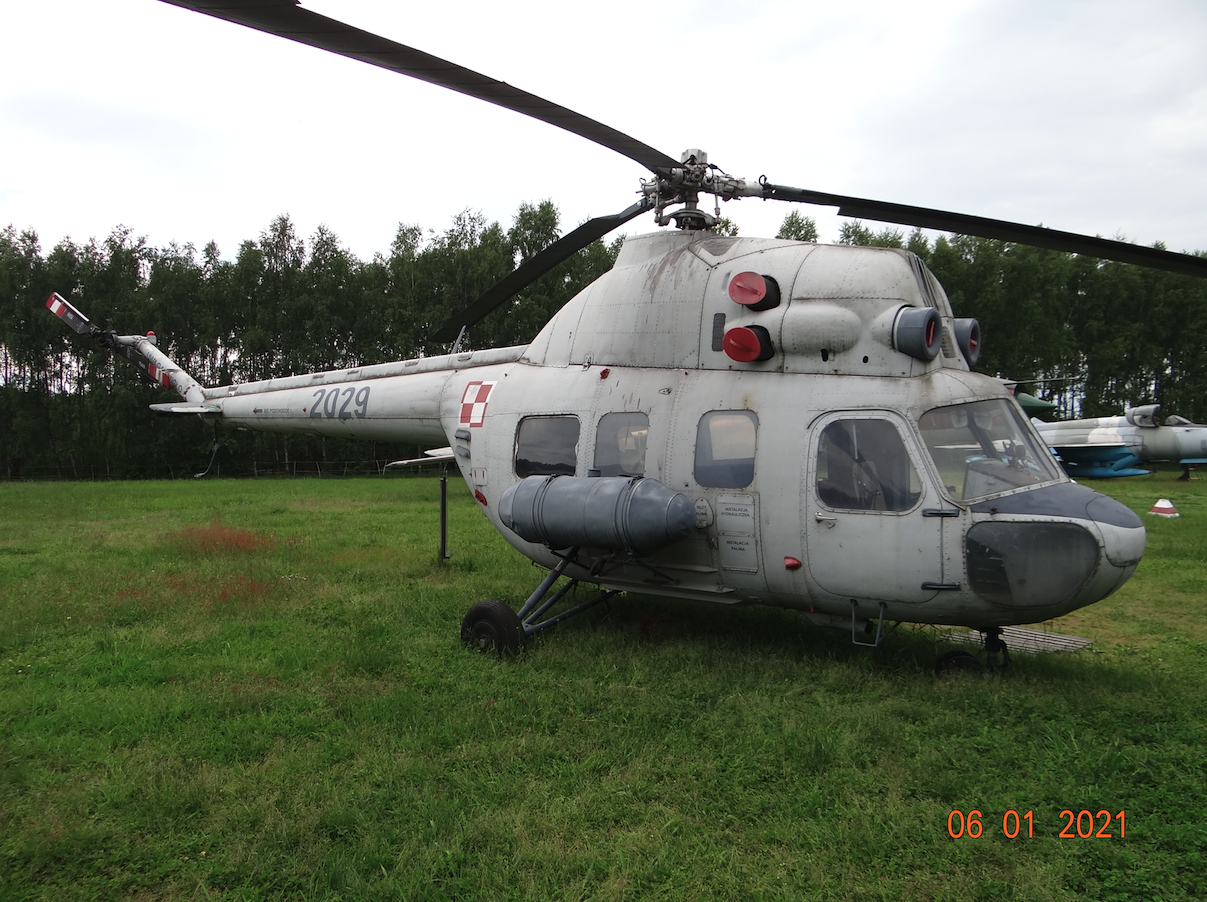Napoleon 2022-11-20
WSK PZL Świdnik Mi-2 nb 2029.
193a Section 1965-08-26. Poland.






History Mi-2.
The Mil Mi-2 helicopter is one of the most recognizable helicopters in the world. In the NATO code Mi-2 was named Hoplite. (Hoplite is a heavily armed foot soldier in ancient Greece from the 7th to the 4th century BC). The helicopter also received several dialectal names, including the most popular "Kettle". It was designed at CCCP in Mikhail Mil's office. The helicopter turned out to be successful and a decision was made about its serial production. However, the CCCP's economy was inefficient, and the munitions plants were burdened with more urgent production. Therefore, a decision was made to locate the production of the Mi-2 in WSK PZL Świdnik. The decision was supported by Świdnik's experience gained in the production of SM-1 and SM-2 helicopters. There was also another advantage for the communists; It was possible to significantly reduce Polish research and development work on domestic structures. In effect; each Mi-2 was built in Świdnik. In 1963, final decisions were made and the Mi-2 helicopter license was purchased. The Soviets did not agree to give the machine the name SM-3, which was provided for it in Poland.
In 1964, WSK PZL Świdnik started the production of Mi-2 helicopters from parts delivered from CCCP. In 1965, the first completely Polish Mi-2 rolled off the production line. In total, about 5,400 Mi-2 helicopters in various versions were built. Originally, the helicopter was designed as a civilian machine. But in Świdnik, several variants were developed for the army and they were mainly produced and used by the Polish Army and other countries. Although the design of the Mi-2 is already obsolete, it is still (2022) in the military and civil services of many countries.
The reason for the creation of the new helicopter was the development of a new turbine engine with the designation GTD-350. The Mi-2 helicopter was not the first CCCP helicopter with this type of drive. The first was the Mil Mi-6, one of the largest helicopters in the world. Contrary to popular opinion, the Mi-2 helicopter was not designed as a light helicopter. After all, it was supposed to take up to 9 people on board. A light helicopter at that time was the Mil Mi-1, for 3-4 people, produced in Poland until 1965, and in CCCP until 1970. The fact that after some time the Mi-2 displaced the Mi-1 from use was the result of its operational advantages. In addition, its twin-engine drive significantly increased safety during the flight. The development of the Mil Mi-2 helicopter was more of an experiment than a specific goal. Because turbine-powered helicopters were a big novelty and all companies building this type of aircraft started working in this direction.
Work on the Mil Mi-2 was started in 1959. In January 1961, a mock-up of the helicopter was approved. In February 1961, the documentation for the construction of the prototype was ready. The first flight of the prototype took place on September 22, 1961.
One of the first prototype versions of the Mi-2 was the agricultural version. Her rehearsals were carried out in one of the kolkhozes near Moscow in 1962. The helicopter received installations for dusting with fertilizers. In September 1962, this helicopter was demonstrated to the CCCP party and government authorities. In May 1963, one of the prototypes set a world speed record on a 100 km closed course, setting a result of 253,800 km/h.
Prototype documentation was sent to Poland, to WSK PZL Świdnik. It was necessary to translate it into Polish and complete the entire production documentation. All instrumentation, assembly stations, control and measurement stations had to be made. After the prototypes were built, static and flight tests had to be performed. The same scope of work was performed at WSK PZL Rzeszów in relation to the GTD-350 engines and the main transmission.
On August 26, 1965, the first Mi-2 helicopter built in Świdnik with parts delivered from CCCP was flown. The crew consisted of Soviet pilots Rafail Karapatian and Belusov.
On November 4, 1965, the first one produced entirely in Świdnik (serial no. 520001) was flown. The crew consisted of: test pilot mgr inż. Wieslaw Mercik, MSc. Eng. Kazimierz Moskowicz and Henryk Jaworski.
Serial production of Mi-2 helicopters lasted from 1964 to 1991, and after a break, briefly in 2005.
Although in the 21st century this design is already obsolete, and the possibilities of its modernization are small, the Russian Rostvertol plant has developed a modernized version of the Mi-2 A. The modernization includes the replacement of engines and avionics. Similar work was carried out at the Ukrainian aviation plant in Vinnitsa. The Mi-2 MSB2 helicopter was developed there, equipped with newer engines, a new reducer, avionics and a slightly rebuilt fuselage.
Mi-2 versions.
Mi-2 T - a transport variant designed to carry 8 people or cargo weighing up to 700 kg inside the cabin.
Mi-2 P - passenger variant designed to carry 6-8 passengers with luggage. Armchairs and sofas are equipped with much more comfortable upholstery. The walls were paneled and the floor was carpeted. A different type of cabin lighting was used.
Mi-2 Sz, Mi-2 U - training variants equipped with a system of double tillers.
In 1974, a specialized helicopter was built for radio and TV transmissions. Received the designation SP-TVA. The helicopter was used extensively during the cycling "Peace Race", with live broadcasts from it. However, the main purpose of the helicopter were tasks performed for the Office of Security.
Crane versions with a lifting capacity of 800 kg were built for Instal in Nasielsk and Mostostal. They complemented three Mil Mi-6 helicopters at work.
Four Mi-2 helicopters in the polar variant were built for the Polish Academy of Sciences, intended for scientists from Polish research stations in Antarctica. Helicopters in this variant are equipped with devices for navigation in the polar regions, modified radio stations and photo cameras and additional searchlights.
Versions with thermal imaging cameras were built for Aeropol. These helicopters were used to control power grids. Military, agricultural and rescue variants are described in separate chapters.
List of PZL Mi-2.
Serial production of PZL Mi-2 helicopters was carried out exclusively in Poland at the WSK PZL Świdnik plant. By 1985, about 4,500 were built, and by 1988, about 5,100. In total, about 5,400 PZL Mi-2 helicopters were built. Most of the helicopters went to CCCP and CCCP dependent countries. In Poland, helicopters were operated in the Polish Army, the Polish Air Rescue Service, and the national economy.
Data T-T Mi-2:
Diameter of the main rotor 14.56 m. Total length 17.42 m. Length of the fuselage 11.94 m. Width of the fuselage 3.25 m. Height without tail rotor 3.75 m. Curb weight 2,375 kg. Take-off weight 3,550 kg. Payload weight 700 kg. Fuel in internal tanks 600 liters. Top speed 210 km/h. Cruising speed 190 km/h. Vertical climb 4.6 m/s. Service ceiling 4,000 m. Hovering ceiling without ground effect 900 m. Hovering ceiling with ground effect 1,600 m. Range 300 km. Maximum range 600 km.
Written by Karol Placha Hetman
